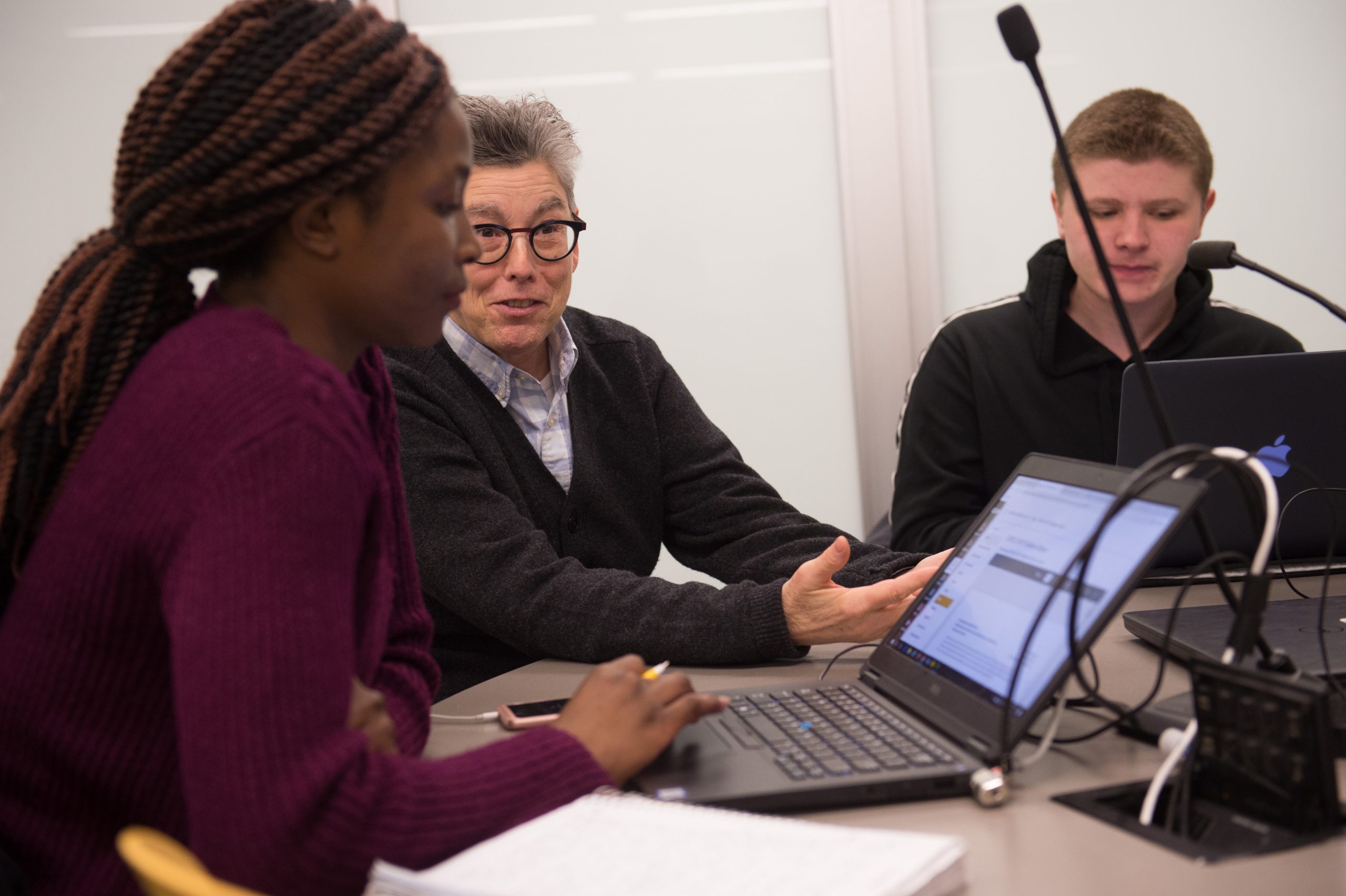11 Universal design for learning: Making your course accessible

Universal design for learning (UDL) is an approach to curriculum design based on the acknowledgement that course materials and assignments are not neutral and that they can create challenges for learners. UDL is a research-based learning framework focused on the breadth of your students’ abilities. It invites you to think objectively about learners’ abilities without making assumptions. Some examples include automatically enabling captions on a video, which might help a student with hearing loss, but which might also help other students to focus on the words being said during class. To check the accessibility of your ICON content, activate the UDOIT tool on your course site.
The UDL framework helps make course content, instruction, and interaction more accessible, minimizing barriers and maximizing learning for each of the students in your class, not only those requiring accommodations or who are international or first generation. The UDL principles promote providing multiple means of engagement, representation, and action and expression of learning.
Federal and state laws require the university to provide equal access to academic programs and reasonable academic accommodations to students with disabilities. Reasonable accommodation means removing physical and instructional barriers to learning so that academic success can be achieved. Accommodation should not be construed as giving advantages to help students with disabilities pass a course or grading them on a different scale. It is crucial to always maintain the student’s confidentiality, avoid tokenism, and not single out any student as a representative of people with disabilities or another group.
We encourage you to nurture a welcoming atmosphere in which students feel comfortable discussing their needs, learning choices, and difficulties with you. Provide appropriate help when asked but avoid placing undue attention on the student in the class. Here are some tips for incorporating UDL principles in your course and making it more accessible:
- Inform students in your syllabi that accommodations are available for students with disabilities and that they must register with Student Disability Services to receive consideration for alternative testing and assignments. In addition to statements in your syllabus (e.g., diversity, wellness, student accommodations, support to international students), on the first day of class, encourage students to speak with you outside of class to help provide any accommodations. For more information about how instructors can assist students with disabilities, contact Student Disability Services.
- Share course information in various modalities (e.g., enable captions for Zoom sessions and provide transcripts for multimedia materials) and use an adjustable format (e.g., options to increase the text size or alter brightness). Allow learners using the technology to adjust or modify settings and empower and enable personalization to meet an individual’s needs. A UIowa instructor developed a survey to learn about their students needs at the beginning of the semester.
- Provide scaffolding by breaking down complex tasks into smaller components and articulating the required steps between them and the big picture goals and skills.
- Ask students to co-design elements of classroom activities or assignments (e.g., co-design rubrics, add questions for exam study guides, or facilitate discussions or labs).
- Create asynchronous ways of encouraging participation and learner autonomy. Give students an opportunity to work on self-selected topics relevant to them. Enable all learners to engage in the learning opportunity at their capacity and ability level.
- Include alternative ways to fulfill course requirements, assistive technology, tutorial assistance, seating arrangements, or modified testing procedures. Offer students flexibility in how they can demonstrate their knowledge and competencies, giving them a choice such as oral presentation, research paper, or project.
Check our interactive pressbook Exploring and Applying Universal Design for Learning: A Reflective Teaching Guide to develop your course with UDL in mind and see concrete examples of UDL in action.
TAs often have limited control over course design. However, there are some strategies you can use to make the course more accessible for your students. For instance, you can check your presentation slides for accessibility and give alt text descriptions to images you post on ICON so students who use screen readers will know what the image is and why it’s there. You can also provide multiple ways for students to communicate with you.
💡 Please reflect:
Do all of your students have access to the materials, technological tools, resources, and supports to succeed in your course? Think of an aspect of your course (it could be your syllabus or any learning experience you are designing for your students). Consider barriers to accessing this information or engaging fully in this experience and brainstorm ways to mitigate or remove these barriers.
To reflect on providing accommodations and making your course more accessible for students, please engage with the teaching scenario and evidence-based teaching strategies, provided by UIowa students.

Feedback/Errata